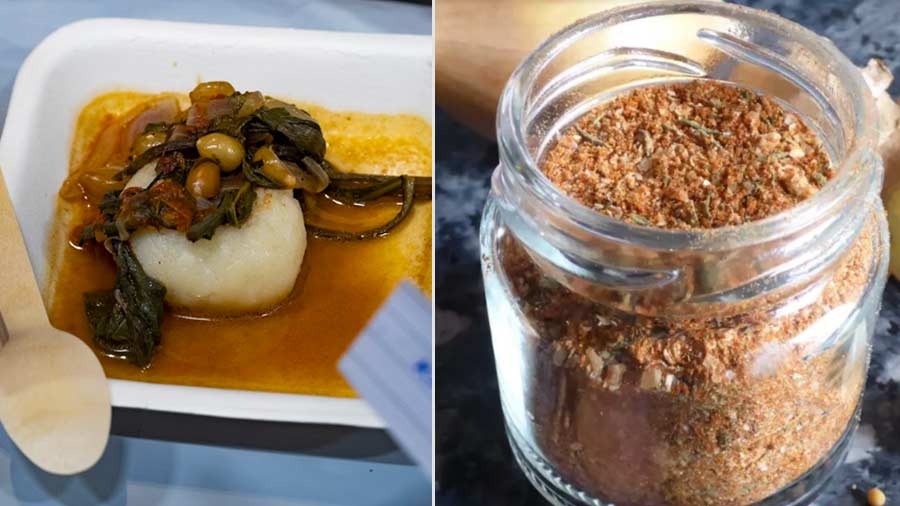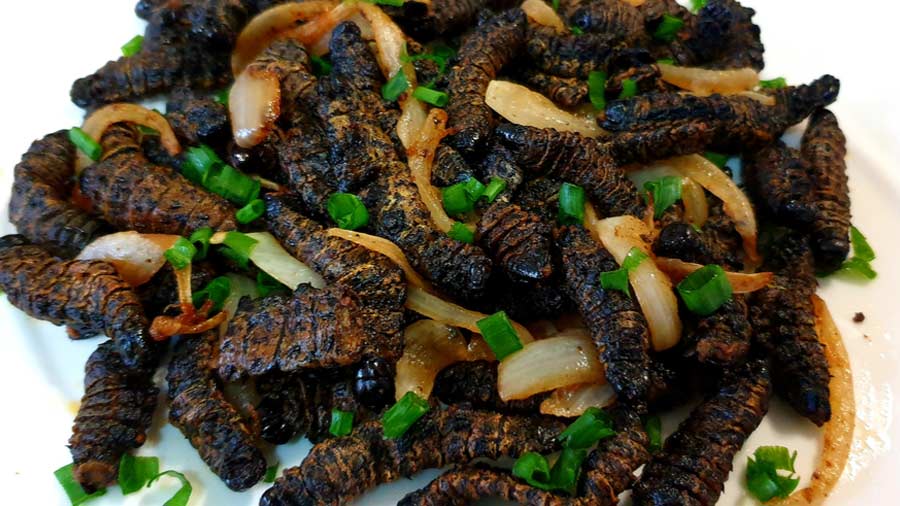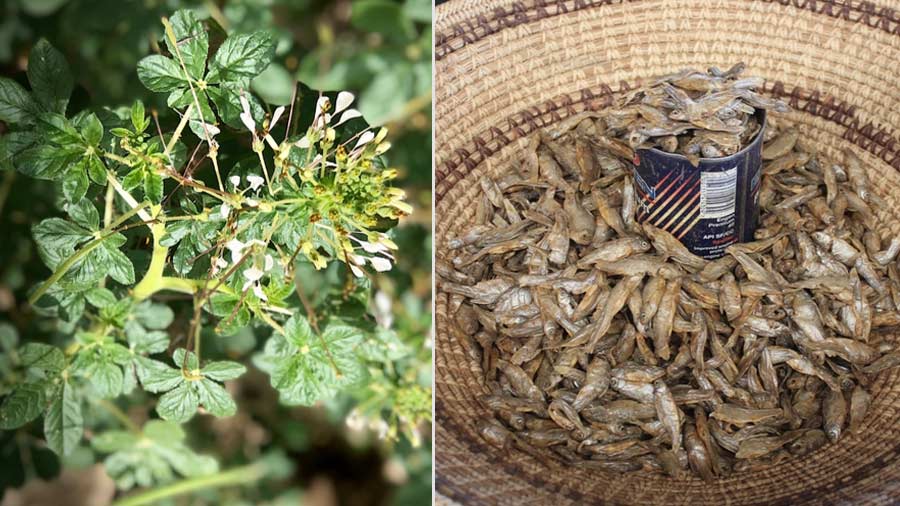When chef Terry Jenkinson joined My Kolkata’s Zoom call for a breezy tête-à-tête on a balmy Wednesday afternoon, he’d just rounded up a masterclass on native Namibian fare at International Institute of Hotel Management (IIHM), Bangalore. “It was a fantastic day and I’m really happy that I got to teach young chefs and pass on the rich culture of Namibia,” said the head of culinary arts at Silver Spoon Hospitality Academy, Namibia.
At 53, Jenkinson has represented South Africa in the World Pastry Cup in 1995. He was the President of the Namibian Chefs Association (2007-2010) and the adviser to the Namibian Chefs Association Board (2010-11). And he’s cooked for the Queen of England!
Edited excerpts from a culinary conversation…
My Kolkata: Who’s the most memorable person you’ve cooked for?
Terry Jenkinson: When I was young, I was part of a big team of chefs who cooked for the Queen of England. It was in the late ’80s and she was visiting Namibia. That was definitely a memorable experience.
More recently, I cooked for the current president of Namibia, Hage Geingob. He once visited the restaurant I was managing (without a reservation!). He wanted to be treated like any other customer. In Namibia, the tradition is to serve yourself whether it's a buffet or not. And he insisted on serving himself and helping himself to the food and that was an extremely humbling experience.
How did you step into the culinary world?
Growing up, I had two choices: one was to become a chef and the other was to be a conservation officer. And the cooking bug got the better of me! I loved the barbecues we used to have and the stews my family would make. These are dishes that take a bit of time to cook and develop the flavours, but it’s so worth it. Some people think it's a bit strange, but I have always enjoyed the upper parts of animals — the liver, tripe and kidneys. A fascination with how flavours and textures develop in a dish is what primarily drove me to pursue a career as a chef.
Break down Namibian cuisine for us…
The interesting fact about Namibia is we've got 13 African tribes so there is a lot of culture that seeps into the food. The majority of Namibians are meat-eaters so the diet of a true-blue Namibian will have very little vegetables and very big portions of meat! Porridge is also a big part of our fare, especially pearl millet porridge. In the rural areas, the population isn’t as well off, so a lot of our cooking is done out in the open on fires and coals.

Porridge Balls made from pearl millet flour or mahangu by Jenkinson at the IIHM International Food Festival 2022 and (right) Kapana spice blend Ritagnik Bhattacharya; www.esterkocht.com
There’s a spice blend that we use that is very traditional to Namibian fare — Kapana. It’s got quite a bit of Portuguese influence in it. It's a blend of chilies, cumin, garlic, ginger, onion, a little bit of brown sugar, salt, pepper, and a little bit of mustard. Sometimes, a little dried thyme as well. This spice is used in everything — on vegetables, meat, street food and even on tomato and onion salads!
What are some Namibian delicacies?
One of my favourite delicacies is called mopane worms — caterpillars that are harvested, dried and then boiled or fried and served as a snack. When I cook this dish I prefer to soak them overnight and then prepare a stew using tomatoes, onions, chilli, garlic and a bit of ginger. Another delicacy I love is the truffles that grow in the Kalahari dunes. It's a very mild truffle and we tend to either cook it like you would a potato or serve it as it is with butter and salt, or simply fry slices of truffle with garlic, butter and spices. We also have these giant mushrooms called ‘Amma Yogurts’, which are delicious.

Mopane worms are caterpillars that are harvested, dried and then boiled or fried and served as a snack in Namibia Shutterstock
Are there any similarities between Bengali and Namibian cuisine?
I think the fact that we use quite a bit of spice in our meat curries is where the similarity lies but nothing more. Namibia and Bengal love the heat so a spice mix in every dish is a must.
If you were entertaining the biggest food names in the world, what would your menu look like?
Definitely something Namibian! For starters, I would include our asparagus — it’s the most amazing asparagus. It's watered by the mist from the ocean so it's got a very earthy and a minerally flavour. Next, we've got some of the best beer in the world. So I’d definitely incorporate some of that into the dishes that are prepared.
I would also utilise the Nguni cow — Africa’s indigenous cows, Kapenta — a very small river, estuary and lake-dwelling fish and Ombidi — a form of plant found in the wild. We’ve also got ingredients like marula whose pulp I’d use to make jams and jellies. So, it could be quite an interesting menu.

Ombidi, a form of plant found in the wild, and (right) Kapenta — a very small river, estuary and lake-dwelling fish Shutterstock
Finally, having visited Kolkata thrice, what do you love about the city?
I think it's the people. Kolkata seems to be quite a friendly city and everyone's very helpful. There are some fantastic venues to visit. I love New Market. The range of spices and the variety of fresh vegetables are very interesting. Especially ingredients we don't get in Namibia like the jackfruit. I always look forward to eating kathi rolls and drinking a cup of chai in a bhar! Another thing I love about Kolkata is the rose water in the biryani — it makes it so much more delicious.
WOK THE TALK
Favourite food in India: Kathi rolls! I also enjoy sambar in the mornings.
Your comfort food: Boere Kos — a stew served with potatoes and vegetables such as sweet potatoes and butternut, garnished with cinnamon, butter and lots of sugar.
Advice for budding chefs: I'm a firm believer that your emotions will affect how you cook. So if you are having a bad day, you're going to produce bad food. So as chefs, we need to learn to detach ourselves from what's happening around us.
Biggest takeaway from your culinary journey: No matter how good you are, you cannot make the perfect dish the first time. You always need to practice.


